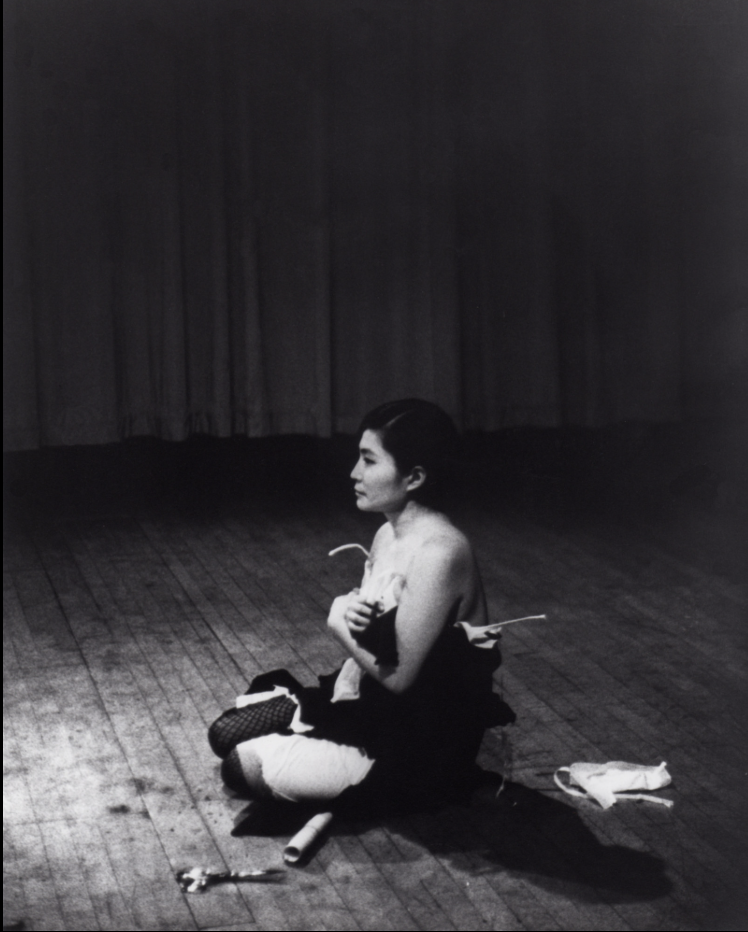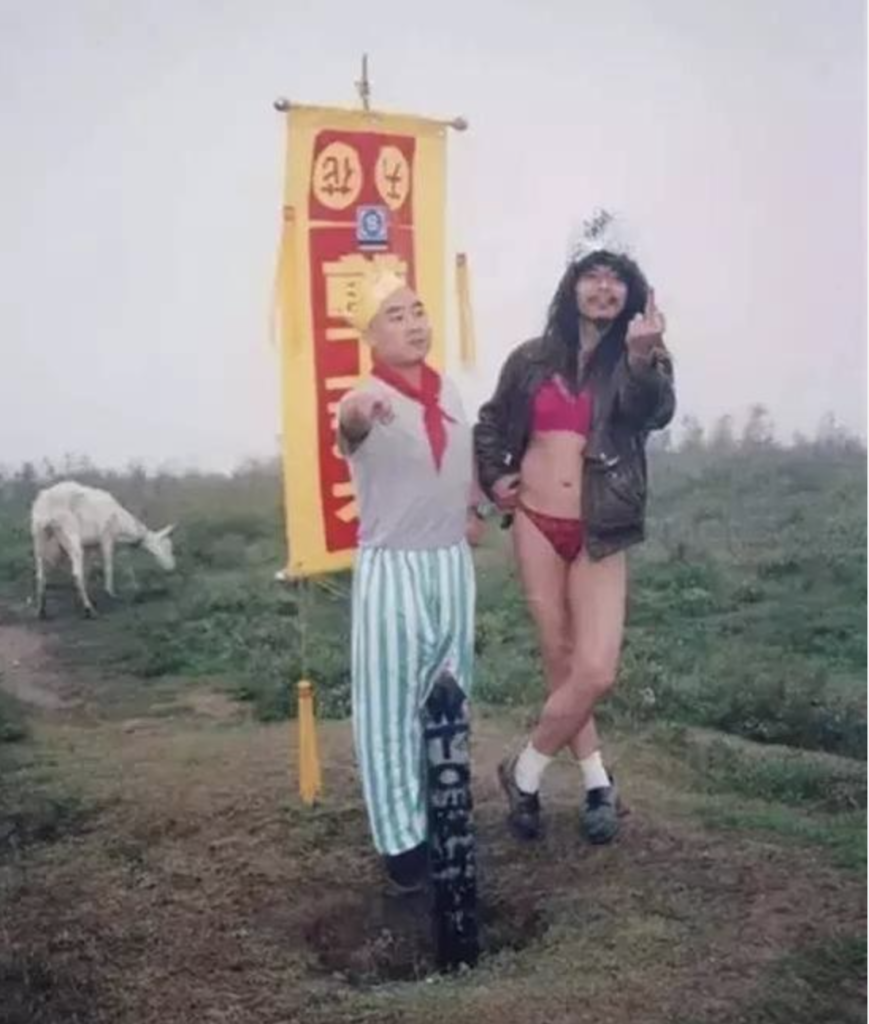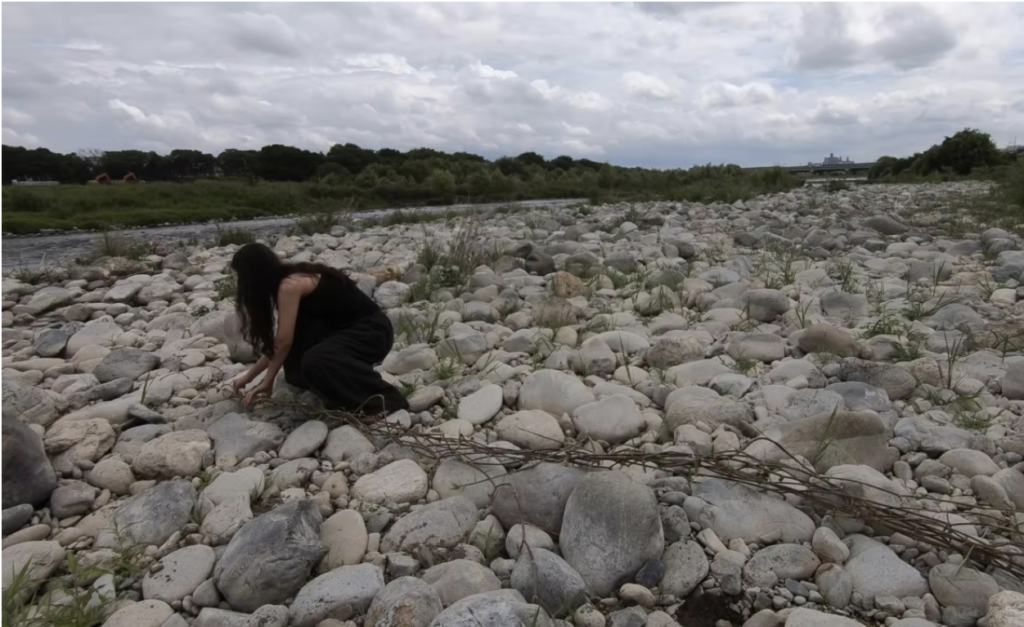I evaluated each artist against three key criteria: embodied awareness (how their work engages the body and senses), spatio-temporal structure (how they shape and perceive time and space), and cultural-contextual fit (how their practice resonates with our themes of gendered time and attention).
Yoko Ono

Yoko Ono: One Woman Show: 1960–1971
I first considered Yoko Ono, the avant-garde pioneer who famously integrates the body into conceptual performance. Ono’s work often places her own body at the centre of feminist critique: for example, her Cut Piece (1964) invited audience members to cut away pieces of her clothing, a powerful enactment of vulnerability and empowerment. This piece crosses boundaries between artist and viewer, embodying presence in real time. Ono’s practice is interdisciplinary and idea-driven, redirecting attention from objects to lived action. Her approach is trailblazing, yet it speaks from a 1960s feminist perspective rather than directly addressing today’s questions of time poverty and attentional overload.
Xiang Xishi

Avant-garde art ascends to the throne
Next I looked at Xiang Xishi, a Chinese artist-curator based in Xi’an. In his own words, he sees performance as “the body’s language, a poem of action,” using the body to show “an individual’s presence in time and space”. His performances often involve the artist and audience jointly constructing a scene, giving poetic presence to each moment. Culturally, Xiang’s work is deeply rooted in China’s contemporary art landscape, which lends authenticity. However, his thematic focus is broad and rooted in collective identity; it does not explicitly foreground the gendered experience of time or attentional strain.
Vera.Moro

Sensory Weaving
Finally, I evaluated Vera Moro (Zhu Xinxu), a Beijing-born performance artist now active in China and Japan. Vera’s work is characterised by extraordinary sensory subtlety. She describes beginning “from the smallest empathy, sensing others through the body,” so that touch itself probes the boundary between self and other. Importantly, Vera reconceives time: as she writes, time becomes “no longer an individual linear experience, but a state of interweaving, permeating flow”.
Her performances deliberately erase ordinary rhythms so viewers must dwell in each fleeting moment. This re-patterning of perception directly meets our project’s goals. Whereas Ono and Xiang use presence and audience, Vera’s practice explicitly addresses how sensation and duration can be recalibrated.
Resource:
Yoko Ono:https://www.163.com/dy/article/G7UH2G9905444NLI.html
Xiang Xishi: https://collection.sina.cn/youdiao/2016-11-30/detail-ifxyiayr8631385.d.html
Vera Moro :https://www.jca3.art/cnx-artix


Leave a Reply